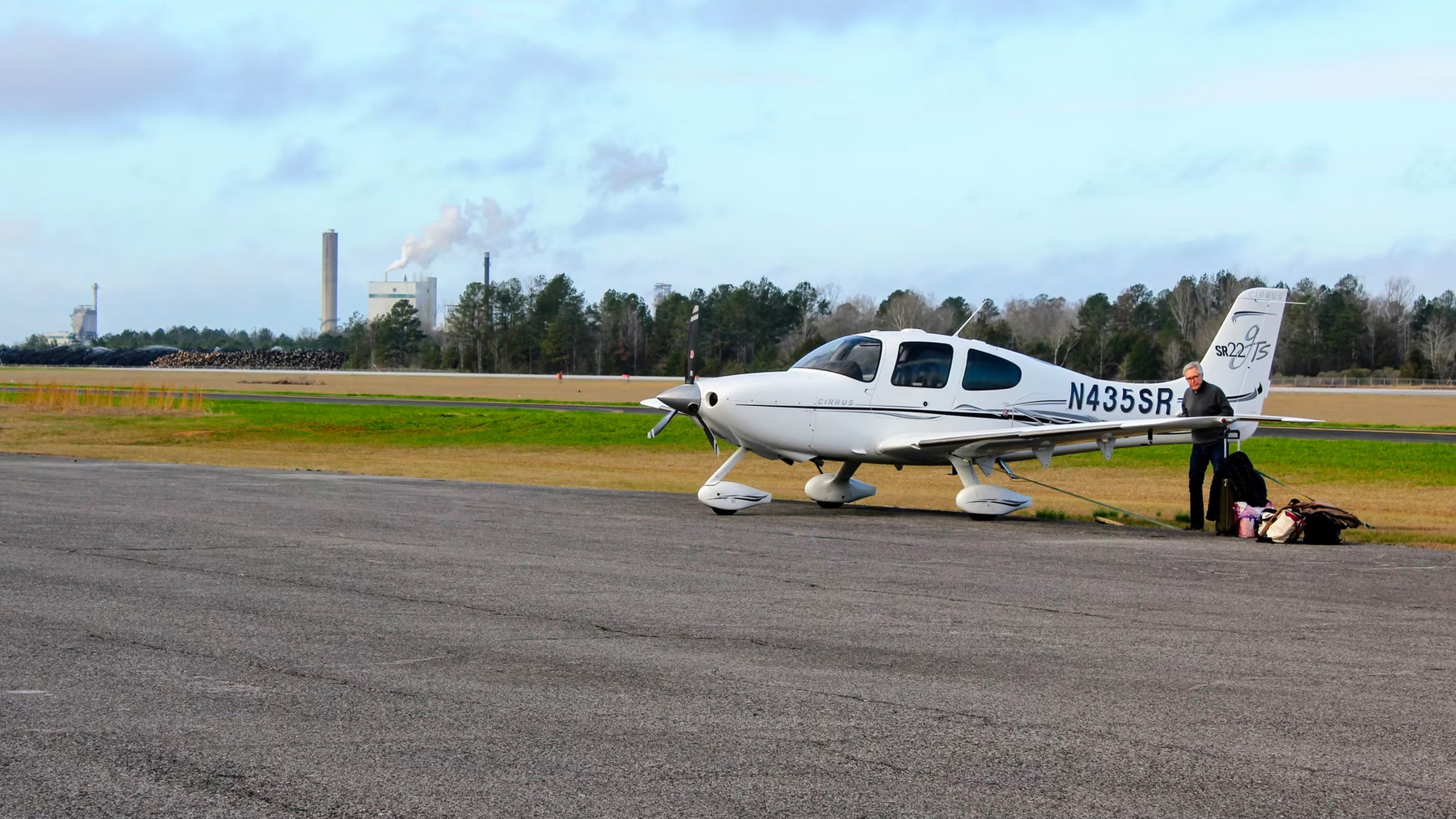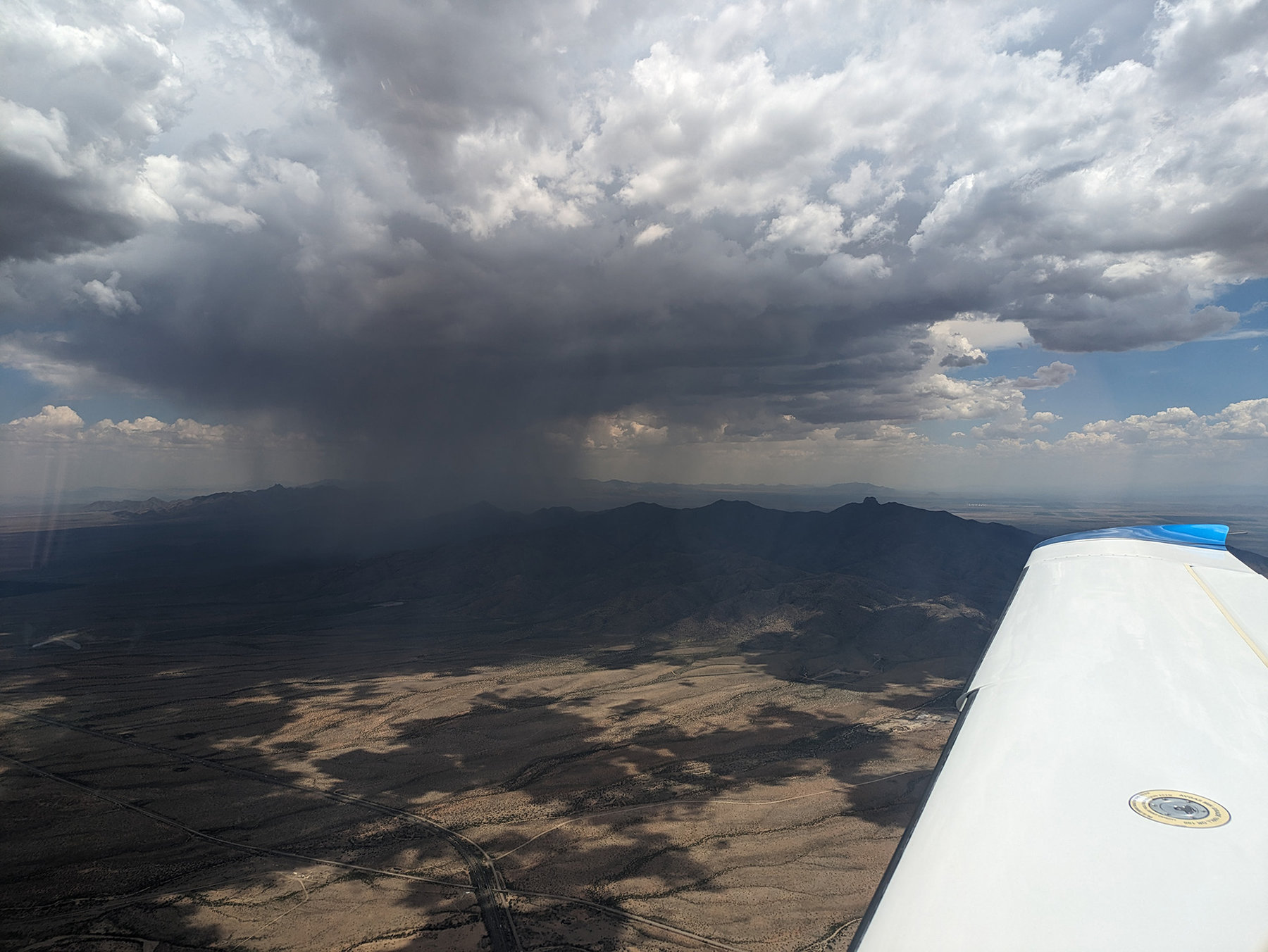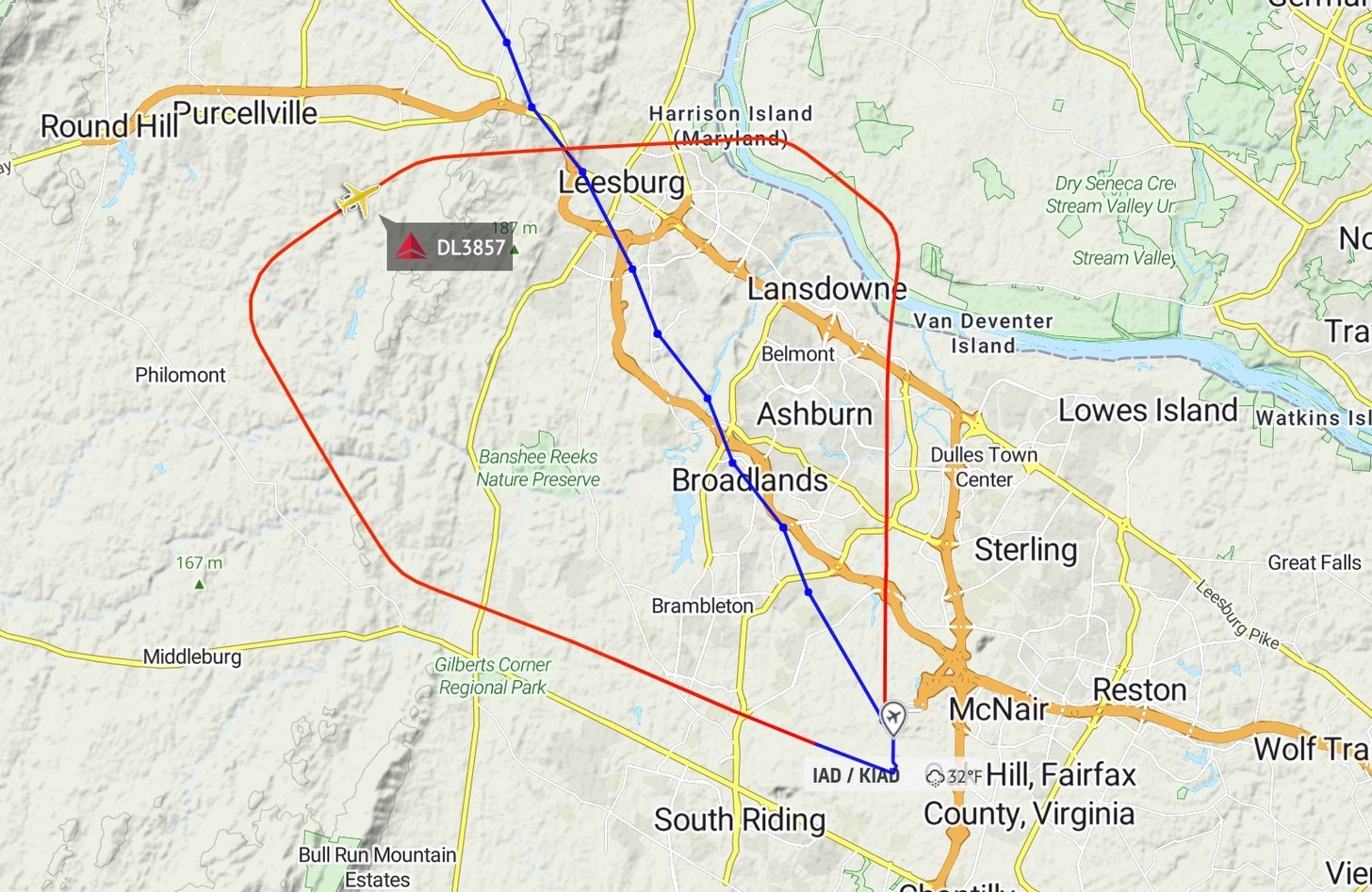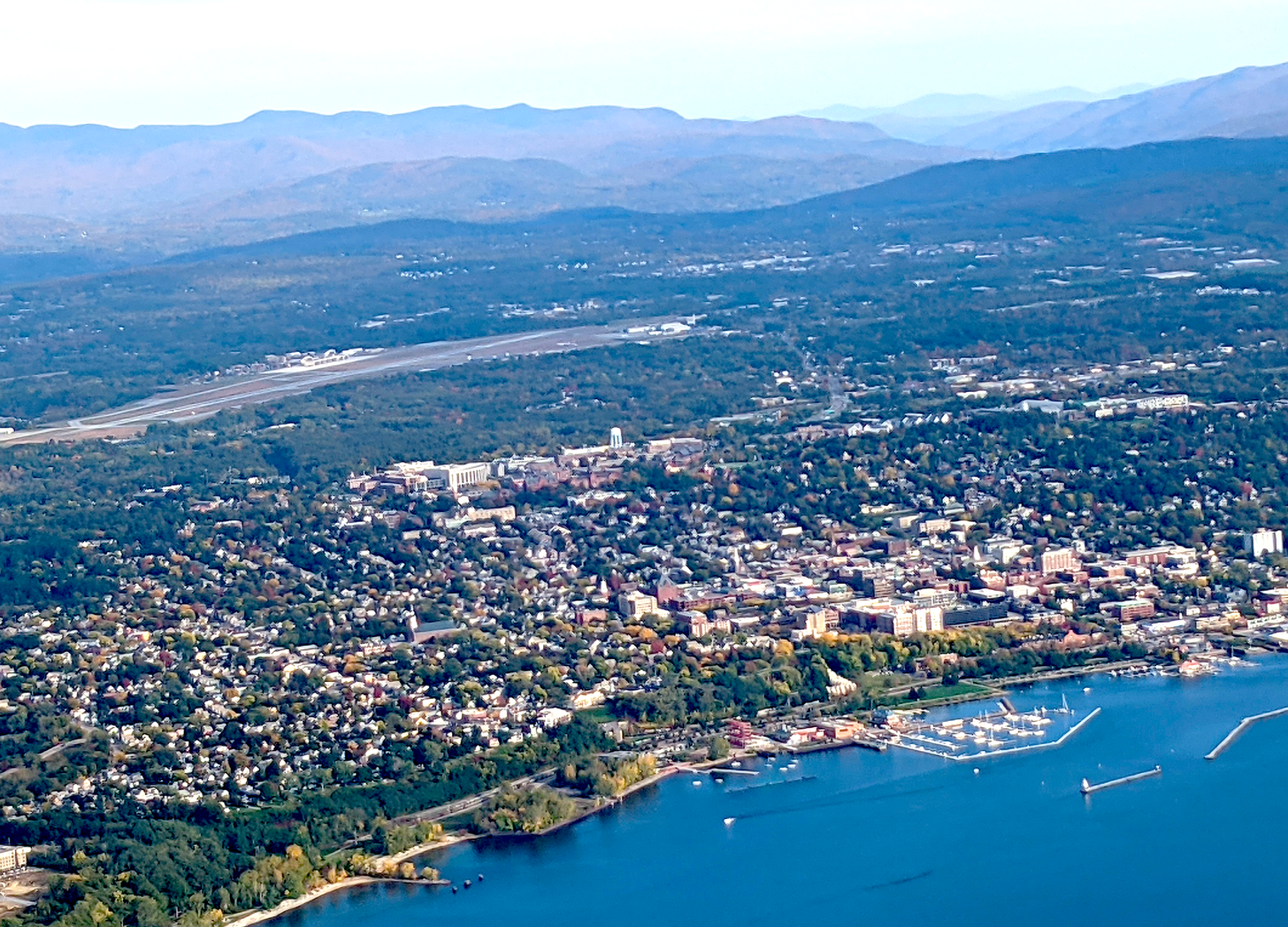
Jim was troubleshooting one of the weather apps in the plane; the software wasn’t communicating to bring in the current weather updates, including radar depictions of areas we needed to avoid. Before this technology existed, we had flown many years without such real-time information, but given the forecast for the next few days along our route to Southern California, we preferred to have everything working before we headed up again into the skies.
Now, only two small things stood between us and progress west. One was the needed update part for our onboard-weather system. That would take a day to reach the nearest Cirrus-proficient service shop, which was in the Addison airport just north of Dallas. The other was the real-time weather. The forecast crosswinds that afternoon for Dallas were gusting above 30 and even 40 knots, far exceeded the safe landing guidelines for the plane.
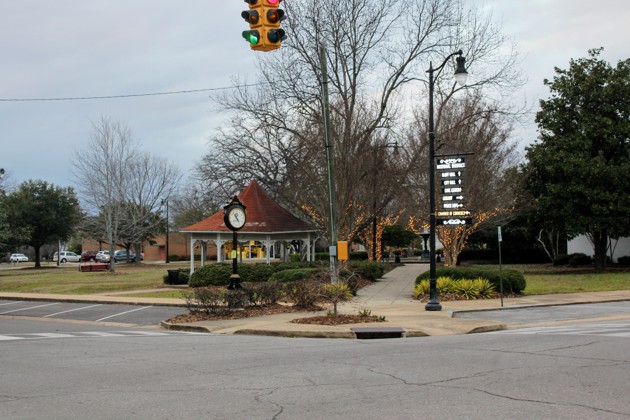
We decided to spend another day in Demopolis, and depart when the winds would be less fearsome and the weather-software part would have arrived. I loved this kind of on-the-go pivot in plans, which had led us to unexpected stays in places like Red Oak, Iowa and Cheyenne, Wyoming and Toccoa, Georgia along our American Futures journey.
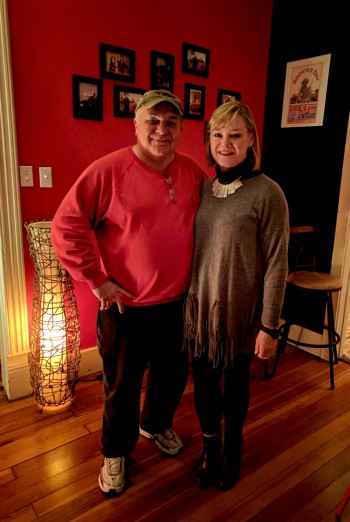
The night before, at a cozy, delicious Demopolis bistro, called of course Le Bistro, we ended up in conversation about the town with owner Mike Grayson, who it turns out had been the Mayor of Demopolis for the previous eight years. In small towns like this, we often found that the energetic folks wore multiple hats. In Eastport, Maine, the local theater stage manager by night was the morning barista at the coffee shop, as well as the nephrologist at the town’s clinic and new owner of the dog kennel.
At the top of my list of Grayson’s suggestions was the Demopolis Public Library. Over the last three years, I often found that the local public library showed the heart and soul of a community. I wrote about many of them here.
In Demopolis we strolled down Washington Street, past as many boarded up storefronts as there were ones in business, thinking that the bones of those buildings offered great potential for future success stories. The public library was indeed the showpiece of the town. In a move showing great foresight, the city engineered an effort to purchase and renovate the former Ulmer Furniture Company store and warehouse. It is a truly beautiful building, as elegant and graceful as any Carnegie library I’ve seen. The second story mezzanine has a wraparound balcony overlooking the main reading room, with wooden Mission style worktables and lamps. Oversized photos of some of the town’s historic moments lined the walls. There was Woodrow Wilson visiting nearly a century ago for the then-legal cockfighting at a fundraising auction to build a bridge over the Tombigbee River.
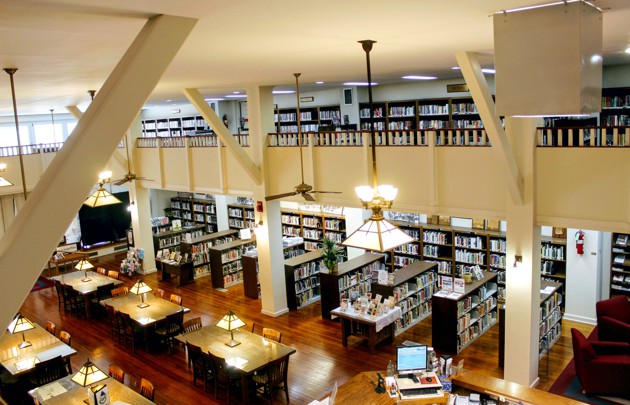
Connie Lawson, the circulation manager and a librarian there for over 20 years, recounted detail for detail a more recent visit in 1998 by Bill and Melinda Gates, who came by to see how one of their first computer donations from the Gates Library Foundation was doing. Connie said that she and her colleagues, intent on making a good impression, had spent days cleaning the library “down to the baseboards.” They were all so nervous, she told us, stressing that Bill Gates was the richest man in the world then, and it’s not every day you get to meet the richest man in the world.
Famous visiting dignitaries could take a lesson from the Gateses, who impressed Demopolis with moments that people would remember and retell for decades. Connie said that the Gateses were as nice as could be; she didn’t wear a touch of make-up; he held his tie in place against the wind with a piece of tape. “The world’s richest man had no tie clip,” she marveled. And his hand was “as soft as a baby’s bottom” when you shook it. The Gateses traveled by bookmobile that day, heading off from Demopolis over to Selma and then on to Montgomery to catch a plane.

The top floor of the Demopolis Public Library was the piece de resistance – the children’s floor. The space was as bright and comfy and engaging as any library’s children’s room I’ve seen in any town around America. It served many purposes from the toddlers’ story time to the opportunities for the town’s sizable home-schooled population.
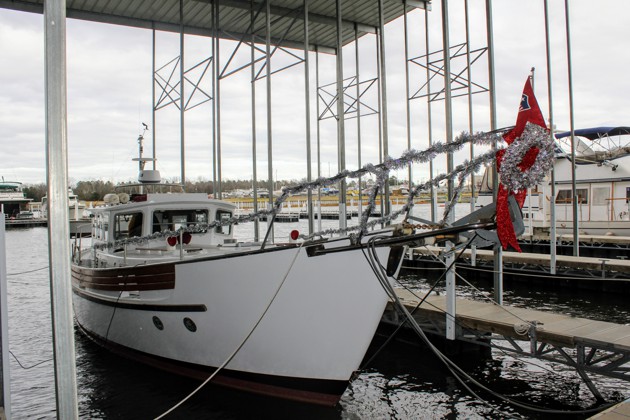
We walked around the town’s Kingfisher Bay Marina, which is a popular stopover for the snowbirds on their southern migration from the north down to the Gulf. Loopers, as we heard the boaters called in Demopolis, follow a 6000 mile systemof natural and also manmade paths that include the Great Lakes, the Intracoastal Waterways, and in Demopolis, the Tennessee-Tombigbee Waterway. (Tombigbee is probably a Choctaw word that means “box maker,” according to a local historian from another of our most favorite nearby towns, Columbus Mississippi.)
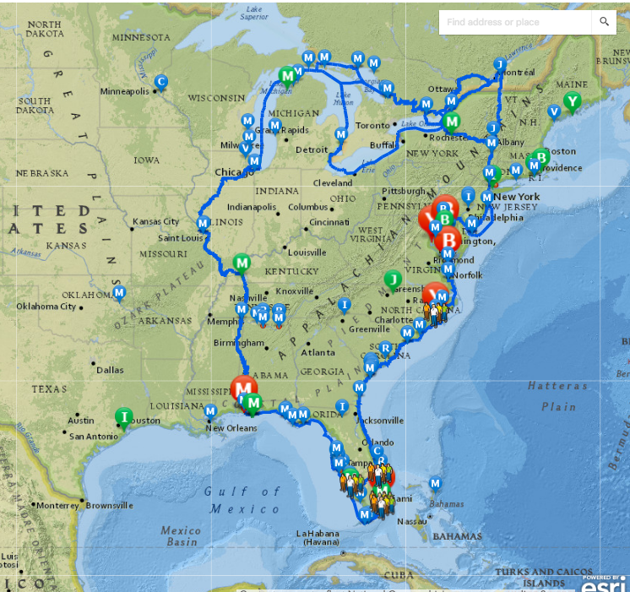
One hardy woman we met on the dock, who lived on their houseboat year round, said that last week, it had been so cold that her husband had to chop up the ice that formed on the docks. Other boats gamely decorated in tropical Christmas lights, and others boasted questionable-sounding home ports of Lancaster, Pennsylvania, and Occoquan, Virginia, both of which are landlocked, as far as I know.
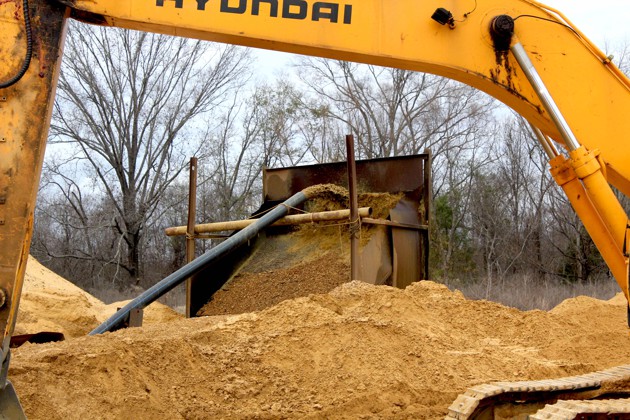
The loud marina dredging was running about eight hours a day now, making sure the riverbed didn’t silt up and prevent the big boats from docking there along their Loop passage. The dredging process spewed out and sifted the sludge into fine sand, an ingredient for the cement, and gravel, which was sold elsewhere.

Before we left the next morning, Mike Grayson toured us around the location of the recently announced Two Rivers Lumber Company, at the site of a former barge-manufacturing plant. The site was located between the river, where they had floated the new barges away, and the airport. Parades of big rigs were lining up to dump their loads of timber to the paper mill, at the far end of the runway. Between the paper mill, which handled the smaller circumference timber and the new saw mill, which would take the bigger timber, they had Alabama’s forest clearing covered.
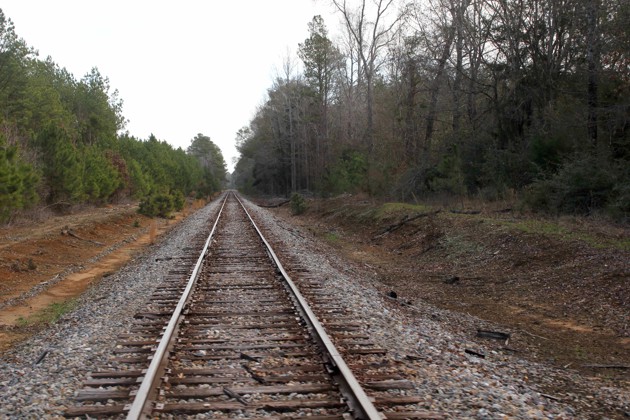
Mike Grayson, with the spirit of town visionaries we had seen across the country, pointed to the forests as we were crossing the highway at the end of the airport road. “This may sound crazy, but when I look across the road here at that forest, what I see is more industry.” We recognized that these were the words of the dreamers and visionaries who are building and rebuilding American towns.

